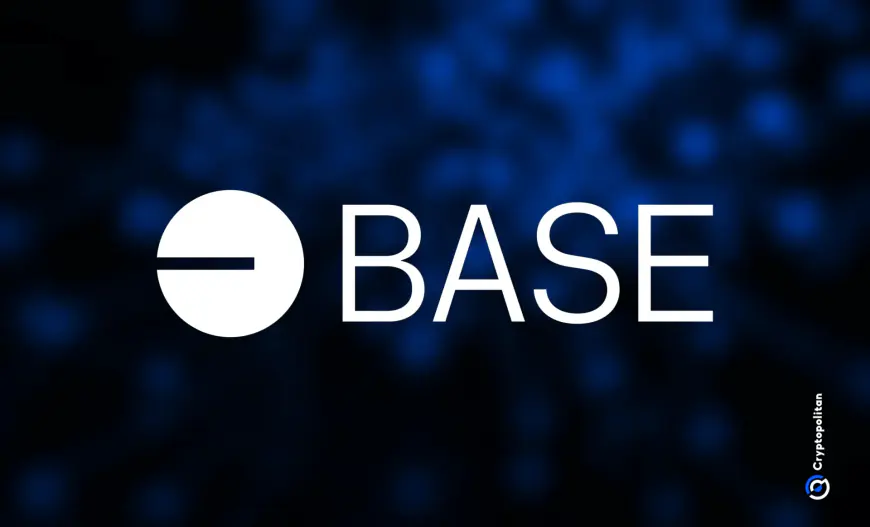Base chain marks a new leap in gas usage
Base made another leap for its throughput metric, estimating gas spent per second. The metric is a proxy for using complex apps and activities, such as DEX routing.

Base chain, the tokenless protocol aiming to build up a wide user base, recently reached a new metric of gas usage. The gas per second marks an uptick in users and underscores the abilities of Base to carry high-speed microtransactions.
Base reached a new high on the metric of throughput, or gas used per second. The L2 network still specializes in cheap transactions, but the recent uptick shows a new level of usage. For Base, both meme tokens and stablecoins are key areas of growth, with applications in reaching centralized markets, DEX, lending pools, and wallet-to-wallet transfers.

Base may also expect growth from the newly introduced cbBTC, the wrapped asset by Coinbase. The new wrapped token, along with cbETH, may become one of the most liquid blue chip assets on Aerodrome and other native Base DEX.
The throughput metric achieved a peak of 11 Mgas/s, indicating how much computational load the network can take, in addition to simple transactions. Throughput does not only account for each action as a simple transfer. L2 chains differ in their expenses, depending on the type of transactions. Simple token transfers differ from using a DEX router.
The Base chain offers multiple types of activities, including perpetual swaps and DEX trades. The gas per second metric reveals how many apps are used on the chain, as well as the ability to generate economic activity.
Base logs around 1.3M to 1.6M active daily users. Those users generate around $80K in fees from basic L2 usage. Since Base is a protocol without a token, it does not pay out regular incentives.
Base has expenses to secure its transactions through the Superchain, using the Optimism protocol. Base also pays out a small fee to secure its state on Ethereum. The rent for using L1 has been as low as $1,300 since Base has a schedule of only using the Ethereum layer rarely, to record its consensus.
Complex apps increase Base activity
Uniswap remains the most widely used DEX on Base, despite the peak activity and volumes on its main competitor Aerodrome. Uniswap is also the app that requires the most complex routing and is capable of generating high-gas fee transactions.
1Inch is the main DEX aggregator, with a highly active version on Base. The aggregator also brings the need for complex transactions and routing, thus increasing the intensity of gas fees. The Base version of 1Inch performs more than $36M in daily swaps, bested only by the main net Ethereum version.
Base handles multiple small-scale transactions, often with micropayments in the form of USDC. The chain handles 4.79M transactions per day, higher than Ethereum and Bitcoin by a factor of 10. Base activity is also higher compared to other L2, almost double that of its closest competitor Arbitrum.
Activity on Base has grown continuously since March when the network launched its ‘on-chain summer’ campaign. Base does not offer incentives to its users, and has not mentioned a potential airdrop, unlike other L2. Since March, Base flipped the count on Ethereum, permanently surpassing it in terms of daily transactions.
The only two other chains offering a stable baseline of throughput are Arbitrum and Optimism. Linea throughput fell after the chain’s airdrop, and Taiko transactions are also sliding to a lower range.
Base catches up with Solana’s inflows
One of the key elements for Base activity is the inflow of Ethereum (ETH) through bridges, as well as stablecoins and tokens. Base drew in $1.3B in value inflows to liquidity protocols, just below Solana’s inflow of $1.5B. Arbitrum increased its inflows to $3B due to the higher value of DeFi activity.
Value bridged is slightly higher for Base, measured at $1.6B by Dune Analytics. According to that metric, Base carries $1.4B in bridged ETH, $37M in bridged USDC, and $7.5M in bridged USDT. Some of the bridged assets may be moving through private wallets.
Base started growing its activity rapidly since March, including its total value locked. After the latest months of inflows, Base increased its total value locked to $2.61B. The bulk of liquidity, about $1B, was locked on Aerodrome, mostly due to blue chip pairs with high liquidity depth. Aave and Uniswap made up close to $500M in liquidity, and Moonwell lending added to the numbers with nearly $200M in its vaults.
Cryptopolitan reporting by Hristina Vasileva
What's Your Reaction?









































































































